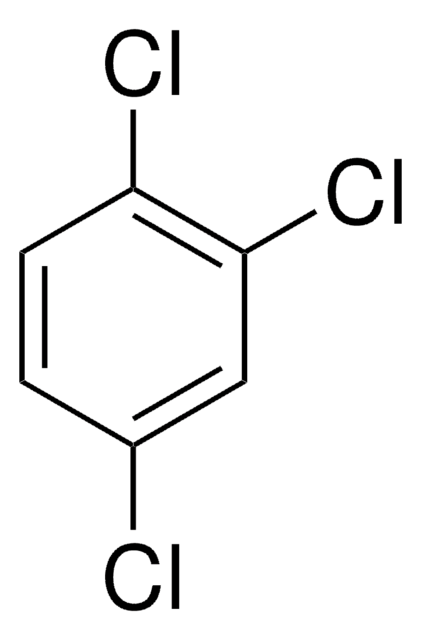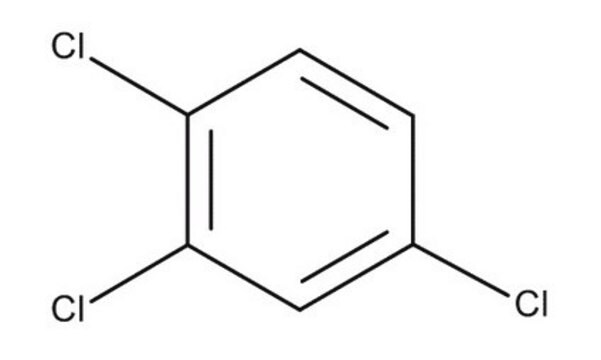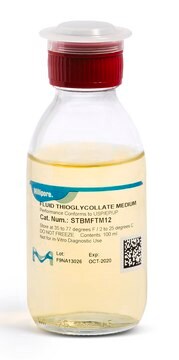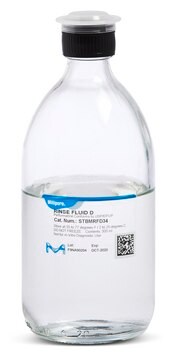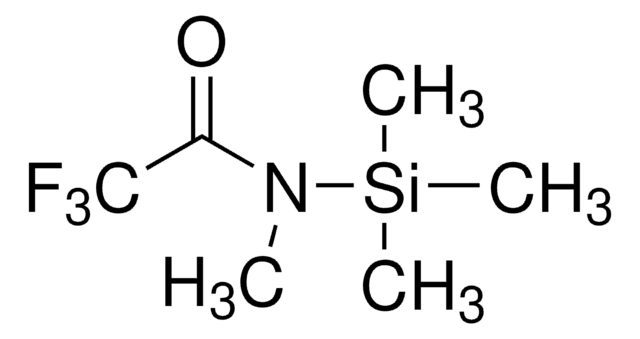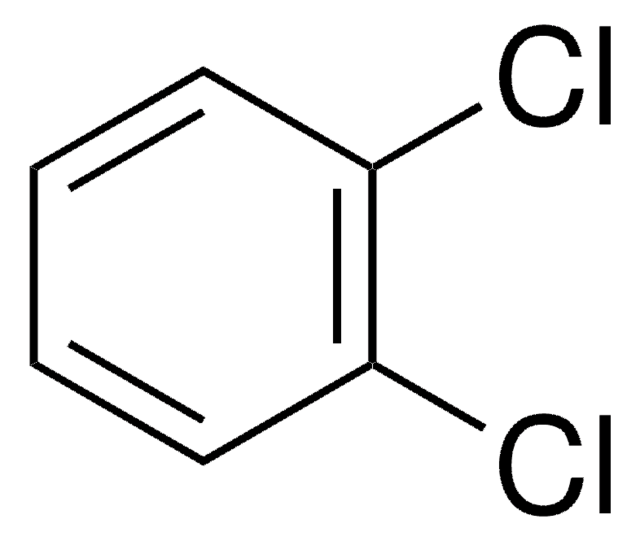256412
1,2,4-Trichlorobenzene
suitable for HPLC, ≥99%
About This Item
Produits recommandés
Densité de vapeur
>6 (vs air)
Niveau de qualité
Pression de vapeur
1 mmHg ( 40 °C)
Pureté
≥99%
Forme
solid or liquid
Température d'inflammation spontanée
1060 °F
Limite d'explosivité
6.6 %, 150 °F
Technique(s)
HPLC: suitable
UV/Vis spectroscopy: suitable
Impuretés
<0.020% water
Indice de réfraction
n20/D 1.571 (lit.)
Point d'ébullition
214 °C (lit.)
Pf
16 °C (lit.)
Solubilité
water: insoluble
Densité
1.454 g/mL at 25 °C (lit.)
λ
H2O reference
Absorption UV
λ: 308 nm Amax: 1.00
λ: 310 nm Amax: 0.50
λ: 350 nm Amax: 0.05
λ: 375-400 nm Amax: 0.01
Application(s)
food and beverages
Chaîne SMILES
Clc1ccc(Cl)c(Cl)c1
InChI
1S/C6H3Cl3/c7-4-1-2-5(8)6(9)3-4/h1-3H
Clé InChI
PBKONEOXTCPAFI-UHFFFAOYSA-N
Vous recherchez des produits similaires ? Visite Guide de comparaison des produits
Catégories apparentées
Application
- Application of electrospun polyacrylonitrile/Zn-MOF-74@GO nanocomposite as the sorbent for online micro solid-phase extraction of chlorobenzenes in water, soil, and food samples prior to liquid chromatography analysis: This article explores the use of an electrospun polyacrylonitrile/Zn-MOF-74@GO nanocomposite for the extraction of chlorobenzenes, including 1,2,4-Trichlorobenzene, from various samples. The method shows high efficiency and selectivity, making it suitable for environmental and food safety applications (Amini et al., 2021).
- Facile synthesis and immobilization of functionalized covalent organic framework-1 for electrochromatographic separation: This research involves the synthesis and application of a functionalized covalent organic framework for the electrochromatographic separation of various compounds, including chlorobenzenes like 1,2,4-Trichlorobenzene. The method shows potential for analytical and separation sciences (Bao et al., 2021).
Mention d'avertissement
Warning
Mentions de danger
Conseils de prudence
Classification des risques
Acute Tox. 4 Oral - Aquatic Acute 1 - Aquatic Chronic 1 - Skin Irrit. 2
Code de la classe de stockage
6.1C - Combustible acute toxic Cat.3 / toxic compounds or compounds which causing chronic effects
Classe de danger pour l'eau (WGK)
WGK 3
Point d'éclair (°F)
235.4 °F - closed cup
Point d'éclair (°C)
113.0 °C - closed cup
Certificats d'analyse (COA)
Recherchez un Certificats d'analyse (COA) en saisissant le numéro de lot du produit. Les numéros de lot figurent sur l'étiquette du produit après les mots "Lot" ou "Batch".
Déjà en possession de ce produit ?
Retrouvez la documentation relative aux produits que vous avez récemment achetés dans la Bibliothèque de documents.
Les clients ont également consulté
Notre équipe de scientifiques dispose d'une expérience dans tous les secteurs de la recherche, notamment en sciences de la vie, science des matériaux, synthèse chimique, chromatographie, analyse et dans de nombreux autres domaines..
Contacter notre Service technique